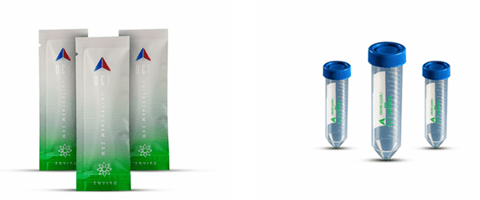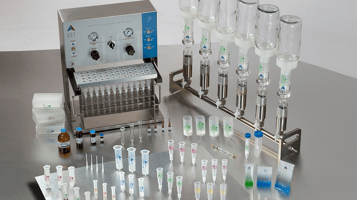Introduction: Are you tired of spending hours on sample preparation for your chromatographic...
Maximizing Sample Recovery with the Right Chromatography Vials
When it comes to chromatography, sample recovery is of utmost importance. And one major factor that plays a significant role in maximizing sample recovery is the type of vials used for the process. Choosing the right chromatography vials can make all the difference in ensuring that your samples are properly contained, preserved, and recovered.

The right chromatography vials are designed to prevent contamination and evaporation, thereby allowing for optimal sample recovery. They come in various sizes, materials, and configurations to accommodate different types of samples and analytical instruments. For instance, glass vials are commonly used for HPLC and GC applications, while plastic vials are preferred for applications that require low adsorption and low background interference.
In addition to material and configuration, other factors to consider when choosing chromatography vials include the type of closure, the quality of the septum, and shape of the bottom of the vial.
The closure should be secure enough to prevent leakage and protect the sample from external factors, such as air and moisture. The septum should be of high quality to ensure proper penetration by the needle and to minimize sample loss. The septa material needs to be free from contaminants that may interfere with the analysis or substances that may interfere with your results. The shape of the bottom of the chromatography vial should satisfy the recovery requirements and the instrument.
It's important to note that when testing for certain substances, such as per- and polyfluoroalkyl substances (PFAS), it's crucial to use septa that are free from these compounds. PFAS are notorious for their persistence in the environment and can be found in a wide range of products, including food packaging, non-stick cookware, and firefighting foams. If your septa contains PFAS, it can interfere with your analysis and lead to inaccurate results. Therefore, it's recommended to use PFAS-free septa to ensure the integrity of your samples and the reliability of your data. Request FREE samples of Chromatography Direct PFAS testing vials and caps >>
While butyl rubber is a cost-effective option for chromatography septa, it's important to note that it may not be suitable for all types of analysis. For instance, butyl rubber has been found to interfere with certain organic compounds, such as alcohols and esters, which may affect the accuracy of your results. Therefore, it's crucial to carefully evaluate your sample matrix and analytical method before choosing a butyl rubber septum. In some cases, it may be more appropriate to opt for a different type of septum, such as silicone or PTFE, to ensure the integrity of your results. See the Chromatography Direct range of caps and request your FREE samples >>
Vials with a flat bottom offer the largest capacity and are the most economical with inserts if required for limited sample. On the other hand, vials with a conical bottom chromatography vials feature a tapered bottom that can facilitate the removal of the last few drops of sample, further maximizing recovery. The conical shape also helps to ensure that the sample is evenly distributed across the bottom of the vial, which can lead to more accurate and precise results. Additionally, the tapered shape can help prevent the sample from splashing and reduce the risk of contamination during transfer.
See the Chromatography Direct range of Absolute Recovery >> and Maximum Recovery Vials and request your FREE samples >>
However, it's important to note that conical bottom vials may not be suitable for all types of analysis, and it's crucial to carefully evaluate your sample matrix and analytical method before making a final decision. By considering all factors, including the type of sample, analytical method, and potential interferences, you can select the best chromatography vials and septa for your specific needs and achieve optimal sample recovery and analysis.
By considering all factors, including the type of sample, analytical method, and potential interferences, you can select the best chromatography vials and septa for your specific needs and achieve optimal sample recovery and analysis. If you require assistance in selecting your chromatography vial and caps please contact a member of the team.




